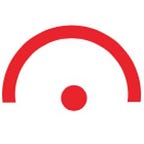Construction Alert — new version of model implemented into Mapflow.ai
Images taken from satellites provide historical view and cover large areas which help to analyse the context and progress. “Construction Alert” tool makes it possible to subscribe for specific sites or for a whole city area to monitor construction changes all around. This tool is considered to be the most scalable and the most cost effective way to detect construction progress and update urban maps continuously.
Based on historical imagery it’s even possible to predict whether the construction project is likely to be completed in time.
The tool is powered by a new model of semantic segmentation of objects under construction trained on images of sub-meter resolution, which was implemented into the Geoalert platform — Mapflow.ai
Statistics reports
Moscow is one of the top 3 regions in Russia with the highest development activity. According to analysts, the development market is growing and the pace of residential commissioning is increasing.
We decided to show how the construction process looks like in statistics and from space, using our new model.
For statistics reports we used data from Dom.RF, which maintains a register of new buildings over Russia.
According to these data, approximately half of new housing is located within the administrative boundaries of Moscow city area and the other half — in the Moscow region (844 Moscow / 1721 total), but the concentration of new housing is increasing closer to the Moscow city agglomeration, which is easy to be shown on a map.
Control from Space
The model trained on satellite images can detect and highlight the boundaries of objects under construction. The classification of construction by different stages is the ongoing research and supposed to be implemented in the new releases.
Throughout the territory of Moscow + Moscow region, our model detected more than 2.19k construction sites, which correlates well with the numbers from the statistics reports of Dom.RF, the bit greater numbers in their database is mainly due to the count of separate buildings within one conglomeration of construction.
Applying the model of “Buildings detection” to outline the individual buildings within the areas under construction (the building must at least have a visible foundation), we will be able to obtain a more accurate number of constructing objects.
The statistics are also far from ideal and contain gaps (e.g. in Skolkovo, which is closest to Moscow city).
On the other hand, it is interesting to target objects that have changed quite recently. For the demonstration we processed images using Mapbox Satellite. Given that most of the images were taken from six months to a year ago, some of the reports in Dom.RF catalog point out the value of the relevance of the imagery. We checked some of these missed spots using Maxar SecureWatch new imagery which is available in our commercial subscription.
Demo map
For those of you who have read till the end and who are interested in how the model works over a large area, we published a map that contains data all over Moscow + Moscow region area — check demo application. 👀
We do not share slides, everything is live and running from our powerful AI mapping tool Mapflow.ai
Comments on data and model testing are highly appreciated. If you are interested in trying in another city, it is very easy, simply select the area on the map and launch the “Construction” model using our application Mapflow.ai
Related stories
In Geoalert we love Maps and Data science. We apply Machine learning for automated detection and mapping over global Earth Observation data. You can find links and contacts below:
- Mapflow Platform
- Mapflow documentation
- Facebook page
- Linkedin page
- Telegram
- Github page
